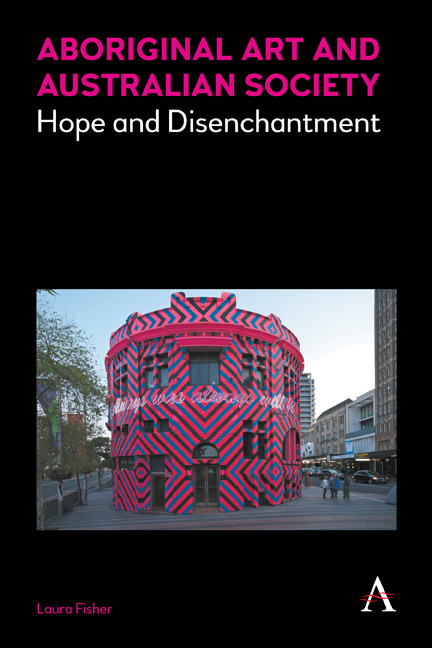Book contents
- Frontmatter
- Dedication
- Contents
- Preface and Acknowledgements
- Introduction
- Part I Governance, Nationhood and Civil Society
- Chapter 1 New Intercultural Relationships in the Post-Assimilation Era
- Chapter 2 Aboriginal People Mobilising Aboriginal Art
- Chapter 3 Understanding Aboriginal Art Subsidy
- Chapter 4 The State Mobilising Aboriginal Art
- Chapter 5 ‘Aboriginal Culture’ at the Nexus of Justice, Recognition and Redemption
- Part II Contemporary Aboriginal Art in the 1980s
- Part III Negotiating Difference
- Part IV Aboriginal Art, Money and the Market
- Conclusion
- Notes
- References
- Index
Chapter 4 - The State Mobilising Aboriginal Art
from Part I - Governance, Nationhood and Civil Society
Published online by Cambridge University Press: 22 July 2017
- Frontmatter
- Dedication
- Contents
- Preface and Acknowledgements
- Introduction
- Part I Governance, Nationhood and Civil Society
- Chapter 1 New Intercultural Relationships in the Post-Assimilation Era
- Chapter 2 Aboriginal People Mobilising Aboriginal Art
- Chapter 3 Understanding Aboriginal Art Subsidy
- Chapter 4 The State Mobilising Aboriginal Art
- Chapter 5 ‘Aboriginal Culture’ at the Nexus of Justice, Recognition and Redemption
- Part II Contemporary Aboriginal Art in the 1980s
- Part III Negotiating Difference
- Part IV Aboriginal Art, Money and the Market
- Conclusion
- Notes
- References
- Index
Summary
The Acquisition, Endorsement and Appropriation of Aboriginal Art and the Growth of Aboriginal Public Culture
With this brief account of the subsidy strategies that have sustained the Aboriginal art movement in mind, we can now explore the other side of the coin: the heightened visibility of Aboriginal art in the context of state endorsed commemorative events, discourses and forms of public culture. Previously I drew attention to Chris Healy's proposition that the 1988 Bicentenary left a ‘heritage vacuum’ in Australian public culture. Healy makes the persuasive argument that this vacuum came to be filled by Aboriginal culture and that at the end of the twentieth century an ‘intercultural zone’ of ‘Aboriginality and heritage’ monopolised nationalistic forms of governance where civic culture was concerned (2001, 287). This is evinced by the flourishing of Aboriginalproduced and themed music, performance, festivals, film and literature in the 1990s and 2000s that had very little of the fringe quality that the Aboriginal arts had in the 1970s and 1980s, and in fact became a significant niche within the Australian Arts sector. This flourishing was undoubtedly connected to a growing public consciousness of Aboriginal cultural trauma, and with respect to arts subsidy, the state's need to publicly reconfigure the terms of Indigenous/non-Indigenous relations. An ‘intercultural zone’ was certainly envisaged in the landmark Creative Nation cultural policy launched in 1994, in which Aboriginal economic prosperity and well-being were married to the cultural enrichment of the Australian community and to national Reconciliation (DoCA 1994, 67, 75). This synthesis is pivotal to understanding the agendas that have driven the circulation of Aboriginal art (Craik 2007, 45; see also Langton and CAR 1994; Garrett 2010a).
The following discussion is concerned with the movement of Aboriginal art to the centre of Australian public life in the 1980s, 1990s and 2000s. It aims to show how Aboriginal art was facilitated, acquired, appropriated and endorsed by the state as a symbolic tool of transformation to instantiate a postcolonial catharsis and resolution that might be generative of a new kind of nationhood. As we will see, this involved ‘complex networks and institutions of collaboration’ that traverse the Indigenous/non-Indigenous divide (Myers 2005, 89).
- Type
- Chapter
- Information
- Aboriginal Art and Australian SocietyHope and Disenchantment, pp. 49 - 56Publisher: Anthem PressPrint publication year: 2016



